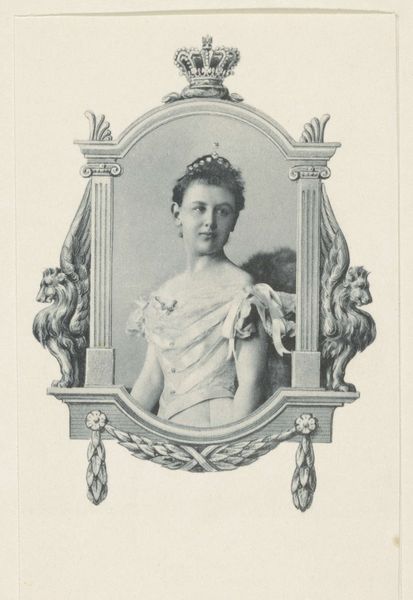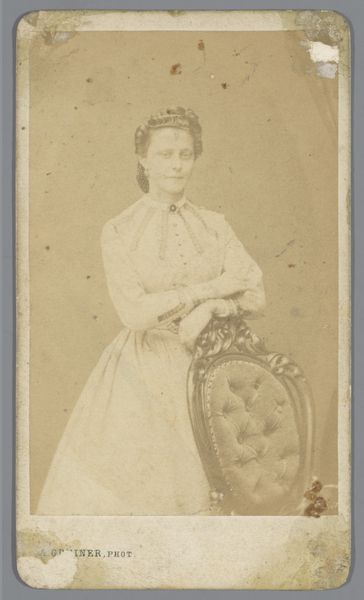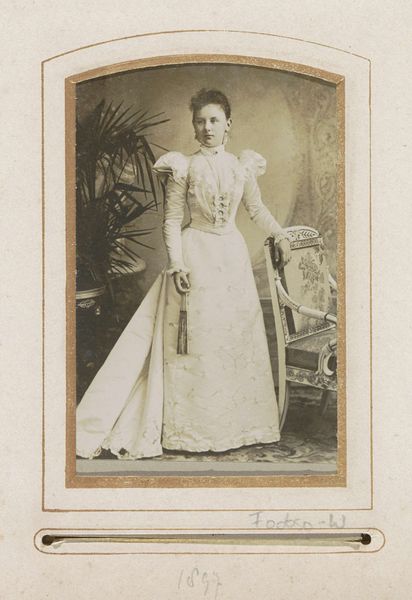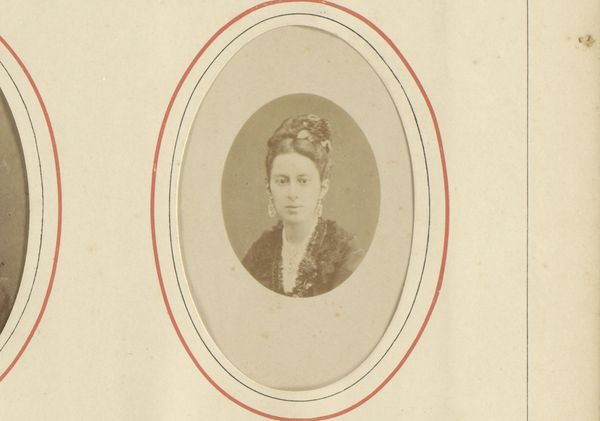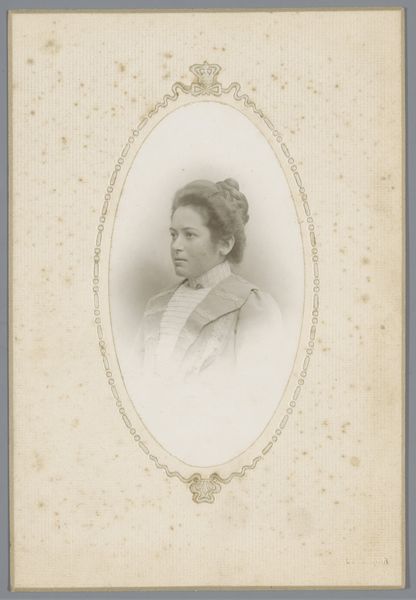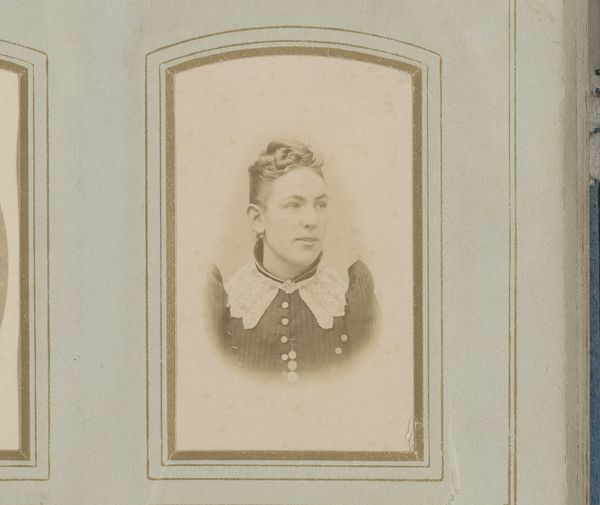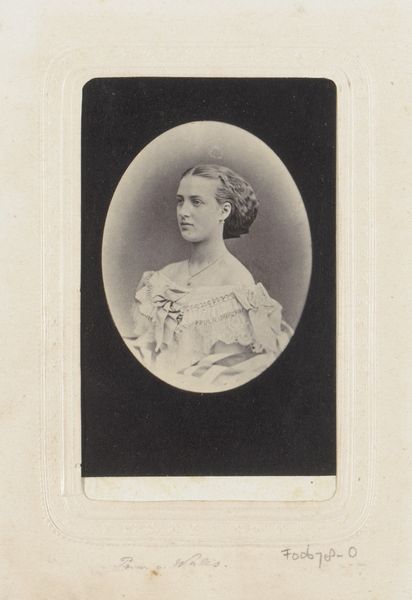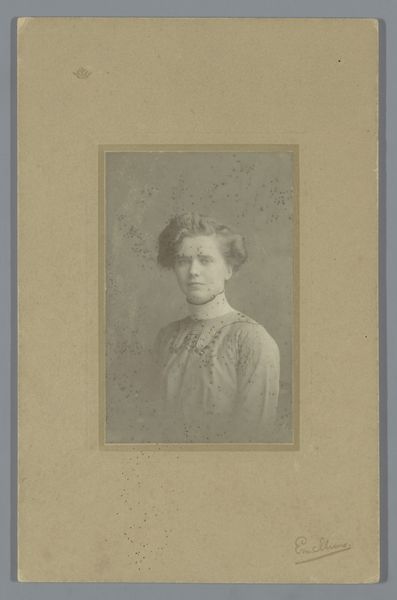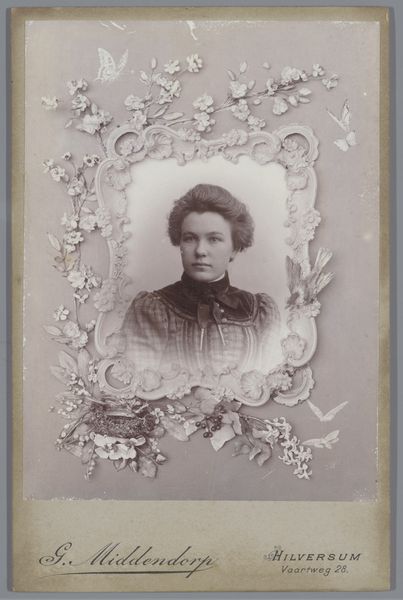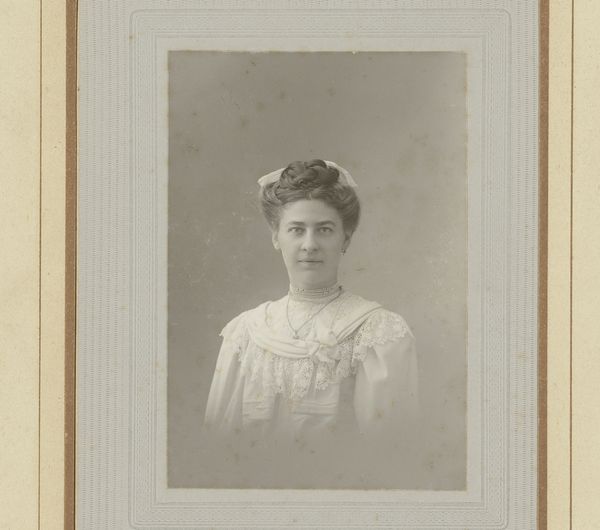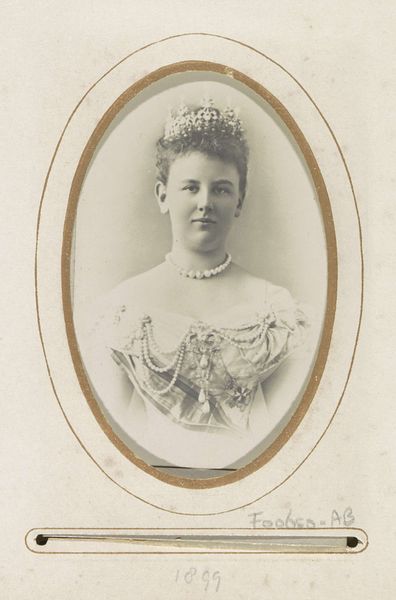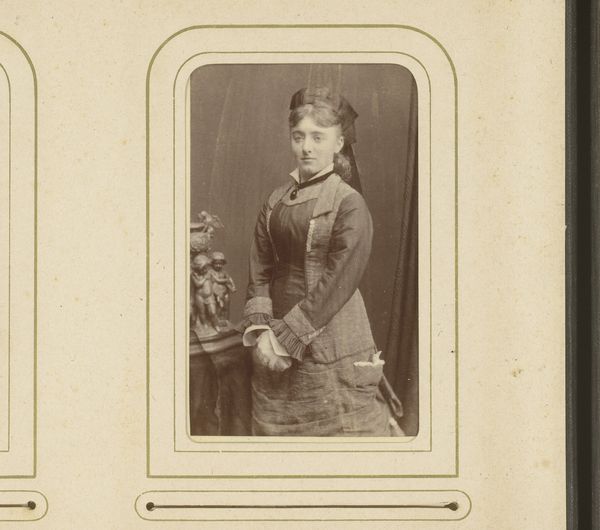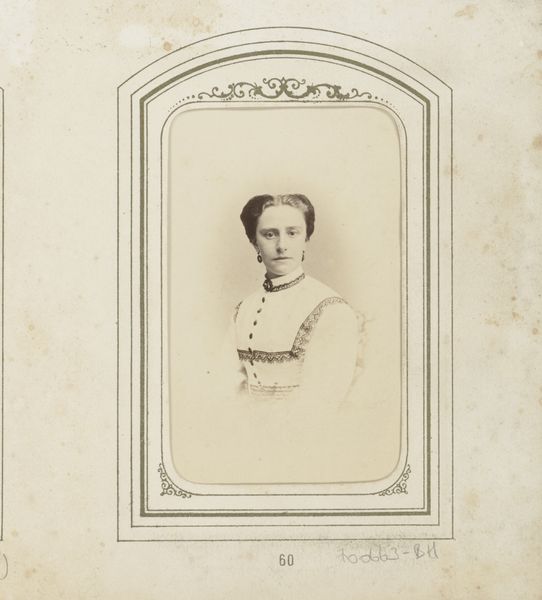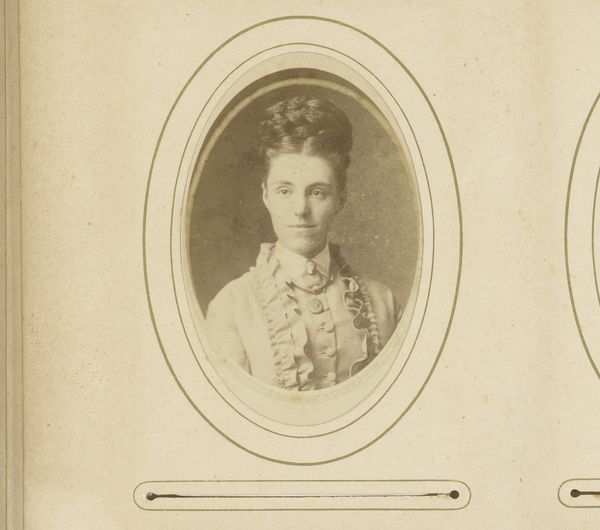
paper, photography, watercolor
#
portrait
#
paper
#
photography
#
watercolor
#
coloured pencil
Dimensions: height 8 mm, width 60 mm, height 207 mm, width 147 mm
Copyright: Rijks Museum: Open Domain
Editor: This is a really fascinating piece. It's a portrait of Queen Wilhelmina by Herman Deutmann, dating from sometime between 1895 and 1920. The work combines photography, watercolor, and colored pencil on paper. What really strikes me is how the laurel wreath softens what could have been a very formal portrait. How do you interpret the overall effect? Curator: Indeed. The softness you perceive speaks volumes. The laurel wreath, a symbol of victory and honor since antiquity, here subtly elevates Queen Wilhelmina while the very approachable artistic medium and the artist's soft touch tempers the cold formality often associated with royal portraiture. The added red and green ribbons around the portrait are telling, considering Wilhelmina was Queen of the Netherlands. What do these details suggest to you about the cultural memory surrounding the monarchy at this time? Editor: That's interesting! Perhaps that the monarchy wanted to present itself in a more accessible way to the people. Using watercolor and pencil gives it a human touch, makes her more relatable, even maternal. Curator: Exactly! This embrace of approachability cleverly uses common symbolism and sentimentality, fostering connection with the monarchy. It encourages a feeling of belonging and national pride. This type of image solidified the Queen’s legacy beyond politics. The pearl necklace, her regal clothing and stoic poise further solidifies Wilhelmina’s importance to the Dutch. Do you agree? Editor: I do. Considering she reigned for so long, images like these must have played a significant role in shaping her public persona. It’s amazing how symbolic elements can be so influential! Curator: Yes, understanding this interplay illuminates our understanding of the artwork itself. It prompts one to reconsider images within both historical context and the long lineage of cultural memory that gives them their power. Editor: Thanks so much! I’ve learned a great deal. Curator: A pleasure, as always. Keep questioning the symbols around you.
Comments
No comments
Be the first to comment and join the conversation on the ultimate creative platform.
